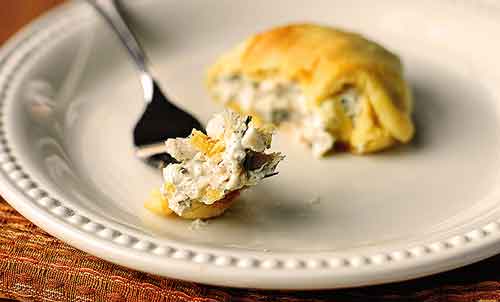当前位置: Language Tips> 合作专区> 英语学习专栏
生活在物质条件充裕的现代社会,年轻一代也许根本体会不到物资匮乏的岁月,老一辈如何勤俭节约、合理利用剩饭剩菜。生活水平提高的同时,我们仍然不能舍弃勤俭节约的传统,更何况,“剩饭剩菜”也可做出许多新的花样……

By Jane Giffen
采苏 选 华玉 注
I read with interest recently about restaurants releasing videos to showcase their wares.
So when my teenage son came into the kitchen as I was preparing dinner and said, derisively , “Leftovers, eh?” I wondered, if trailers for restaurants are tempting our palates, what marketing miracles could we perform with yesterday’s warmed-over supper?
When I was growing up in the 1960s there were no ATMs, no 24-hour grocery stores and few restaurants open on Sundays. Our parents remembered the Depression and the austerity of wartime. If you were between pay cheques or didn’t get to the bank on Friday, you had to eat what you had.
Even during the week, there was no running out to grab a ready-made meal: The most interesting things in the frozen food aisle were Salisbury steak and Tater Tots.
No, back then you had to man up and open the fridge. Add to this the fact that we ate a lot less then, so if you cooked a chicken on Sunday, you could bet you would be eating the rest of it on Monday.
Our mothers (forgive the sexism, but women prepared most of the family meals in the Sixties) were the ultimate spin doctors. They never used the word “leftovers.”
My mother was a great cook, and frugal . One day you might have a roast ham. The next day, dinner would be ham slices. And on the third day, you would walk into the kitchen and find out you were having “Polynesian Delight.” That meant all the scrabbly bits of leftover ham held together by some culinary alchemy (probably Miracle Whip) and topped with a canned pineapple ring.
My mother was not alone in rebranding yesterday’s dinner. A short survey of some of my friends revealed there were several ways our moms did this.
One was geographic: using names of exotic locales to make the dish seem more attractive (hence Polynesia).
Even better was to throw in a few foreign words, preferably French. The use of “à la” or “avec” helped put a whole lot of lipstick on the pig, er, last night’s pork chops.
One friend’s mother used to employ the family’s last name to great effect: “Tonight we are having Noodles Arnott!”
Or snazzy catch phrases were invented to tempt people to the table. One mom used to announce a “Refrigerator Round-up” every Thursday night. Yee haw, pardners ! That’s some good, albeit familiar, grub!
A co-worker remembers that when supplies got low at the cottage, her mother would put together something called Beans Mambo (canned baked beans plus stewed tomatoes). Pure genius !
Luckily, our mothers did not have to contend with the tsunami of food sensitivities that beset us these days. They surfed to creative heights on a wave of carbohydrates , dairy products and canned soup.
Noodles, rice, potatoes, even crushed corn flakes were the fillers in all this repurposing. Recipes were simple. All you needed was a little leftover protein, a binding agent and a starch, and voila! Chicken à la King. I don’t know who is responsible for that work of culinary convergence, but I bet they had a bit of chicken and some dried-up rice in their fridge.
The use of sophisticated terms has been a gastronomical gambit for a long time. Fricassee, croquette, dauphinoise – all of these were invented to fancy something up or stretch something out. Newburg? Thermidor? That’s culinary newspeak for “we’ve got to move these shrimp before they go bad.”
When my son turned up his nose at yesterday’s pot roast, I realized I needed to continue the trend in a NextGen kind of way. I had to get edgier in how I remastered last night’s dinner – dream up something that would attract younger folk raised on Halo and umpteen sequels of Friday the 13th . So, picture a backlit silhouette of Uncle Ben or Betty Crocker, a dripping spatula in one hand. A foreboding voiceover says:
“It appeared on Sunday.
“It was still there on Monday.
“Tonight, dinner’s back with a vengeance .
“D2 (Dinner, the Sequel ).
“This time, it’s indigestible … ”
(来源:《英语学习杂志》 编辑:Julie)
上一篇 : 爱的四重奏
下一篇 : “赃物”还是“酷范儿”?
关注和订阅


电话:8610-84883645
传真:8610-84883500
Email: languagetips@chinadaily.com.cn